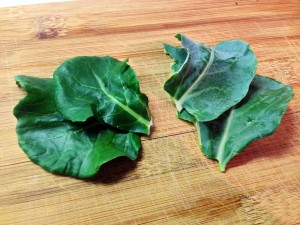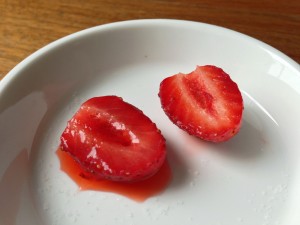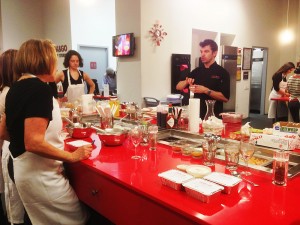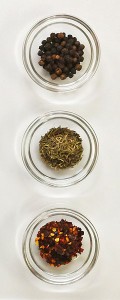So kale may very well be the “it” vegetable of 2013, with the New York Times proclaiming “The fashionable plat du jour these days is the humble kale salad”. And rightfully so, given its antioxident rich nutrient profile. But how about some love for kale’s less trendy cousins? I’ve got some collard greens growing in my garden, and I was surprised to find out that they are actually the exact same species of plant as kale. In fact cabbage, broccoli, cauliflower, and brussels sprouts are also different cultivars of that same species, Brassica oleracea. Who knew?
Those veggies all look rather different but share a similar taste, and to a majority of us (about 70%) that taste is bitter. The bitter flavor compounds are related to a chemical called PTC, which you might have encountered in biology class when the teacher gave you little paper strips to taste and 3/4 of the class made “ick” faces as the rest wondered what the fuss was about. That’s because you need a certain gene to taste the bitterness, and if you don’t have it, brassica veggies probably taste pretty good.
Now getting back to trendy kale – that fashionable plat du jour is actually the massaged kale salad, which when I first heard about it sounded like a bunch of foodie crap. But confronted with a harvest of collards and not really wanting to cook in the heat of summer, I figured I’d give it a try. The theory is that by rubbing the leaves together you essentially cause them to wilt – the cell walls break down and enzymes are released, making the leaf both less tough and less bitter. Most recipes also call for working in a dressing with salt, an acid, and a fat, which further cause the leaves to break down as well as working to cut the bitterness on your palate.
Lo and behold, it works! So, if you’re not afraid to get your hands dirty for a few minutes, here’s a simple, healthy salad:
| Massaged Collard Green Salad | Print |
- One bunch collard greens or kale
- 1 tbsp lemon juice
- 1 tbsp olive oil
- ¼ teaspoon salt
- Toppings of your choice (bacon bits, parmesan cheese, sundried tomatoes, walnuts - whatever you've got handy)
- Wash the greens, remove the stems, and tear the leaves into rough pieces
- In a large bowl, add the lemon juice, olive oil, and salt to your greens
- Get your hands in there & grasp large handfuls of greens, crushing and rubbing them together like you're kneading bread. Keep this up for 2-3 minutes or until the greens are pretty well wilted.
- Mix in your toppings and serve!




